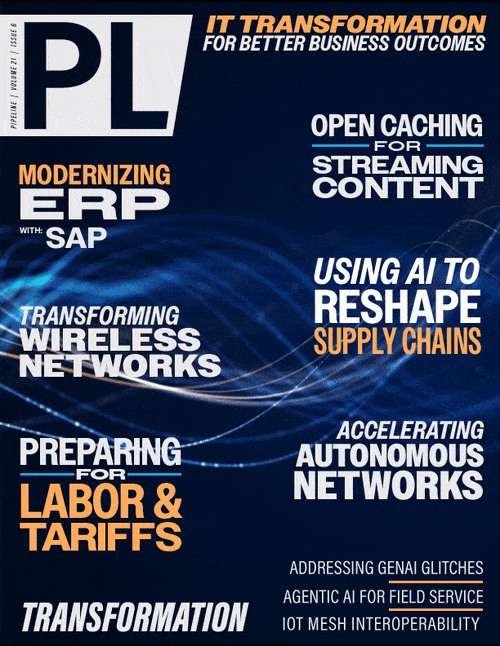Cloud Logic: The Strengthening Case for Telecom Companies to Run Their Businesses in the Cloud
By: Gary Pan

As busy as global telecom giant BT Group was back in 2019, launching new business and consumer offerings around 5G, the cloud and other technologies that were emerging, while the company was also coming face-to-face with the shortcomings of its own business processes and technology infrastructure. Thus was born the company’s Making Finance Brilliant initiative, a massive behind-the-scenes effort to modernize and streamline its finance operations.
Mission accomplished. Four years later, the initiative, which entailed replacing 11 disparate legacy systems with a single enterprise resource planning (ERP) platform based in the cloud, had yielded a wide range of benefits, including a 30 percent improvement in operational cost efficiency, the ability to close the books 40 percent faster every month, increased productivity, and deeper insights to inform business strategy.
Tbaytel, Canada’s largest independently owned telecom provider, had similar motivations several years ago when it set out to transform and future-proof its business by integrating, simplifying, and automating key processes. As in BT’s case, that effort resulted in the company replacing various legacy systems with one integrated cloud-based ERP platform, and reaping tangible benefits from doing so.
While the two companies differ in size, market footprint and other respects, BT and Tbaytel prove an important point about business transformation, which is that a company can successfully modernize its processes and technology infrastructure, with limited disruption and strong ROI to show for it.
Cloud Catalysts
Prior to their modernization programs, BT and Tbaytel found themselves in a scenario that might sound familiar to other telecom companies, where their business software and systems are struggling to keep pace with the demands of the business.
What would motivate a telecom company to upgrade its ERP system and move its core software to the cloud? Heightened customer and employee expectations could provide the impetus, as could a desire to offer increasingly diverse and sophisticated products and services, as well as growing pressure to leverage technologies like generative AI (genAI) in their core processes, including record-to-report, procure-to-pay, and order-to-cash. As prevalent as mergers and acquisitions are in the telecom world, M&A activity can also warrant a modernization effort that involves starting fresh with a greenfield ERP implementation, especially when consolidating the two companies’ legacy systems would be cost-prohibitive and impractical.
A younger, fast-growing telecom company (such as a regional fiber provider), may want a stable, proven cloud-based software environment that can readily scale with the business during a hyper-growth phase. A company could turn to a cloud ERP to provide the IT foundation for a spin-off company. Or, as was the case with BT and Tbaytel, it could be that their legacy systems are so costly and burdensome to the business that replacing them becomes imperative — and a failure to do so could hurt the company’s competitive standing. The following indicators could suggest it’s time for a telco to consider such a move:
High software customization and maintenance costs. IT systems that include a lot of customizations can be difficult and costly to maintain and upgrade, and can struggle to support a transforming business.
- Lack of real-time insights. Legacy systems frequently rely on batch processing, which limits timely access to actionable data. It also may be difficult to combine operational data across systems to extract business insights, hindering decision-making.
- An outdated user experience (UX) and user interface (UI). UX and UI are key drivers in people engaging with software systems. Integrating potentially revolutionary UX and UI tools like generative AI is a difficult proposition for companies operating in a legacy environment. In the cloud, however, companies can readily access, integrate and scale genAI as well as other forms of business AI.
- A complex and redundant system landscape. Multiple deployed instances and software sidecars are a common hindrance with legacy software infrastructure. This added complexity can slow down a business.
Complicating Factors
As strong as the business case for a telecom company to modernize its business technology infrastructure may be, certain factors could complicate such a move. I recently heard of one telco CEO who, after his company had shifted to a cloud-based ERP system from an on-premises system — and in the process shifted its ERP costs from a capital expense to an operating expense (cloud software often carries a subscription-type fee) — second-guessed the move because the additional operating expense could dilute the company’s EBITDA (earnings before interest, taxes, depreciation, and amortization) performance. Oftentimes, however, the broad business benefits of such a shift far outweigh these balance-sheet-first concerns.
Rather than undertaking a large-scale digital infrastructure transformation, a telecom company might opt for a “wrap and extend” approach. Instead of replacing legacy core systems, they modernize the front-end system with workflow orchestrations and a



















